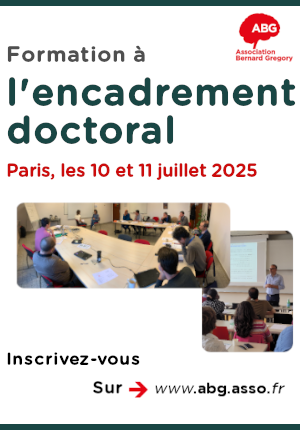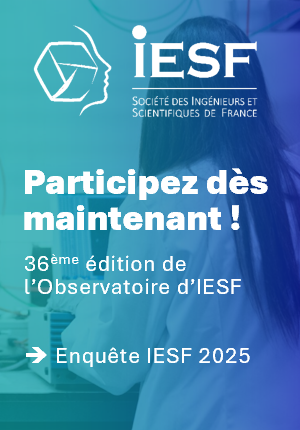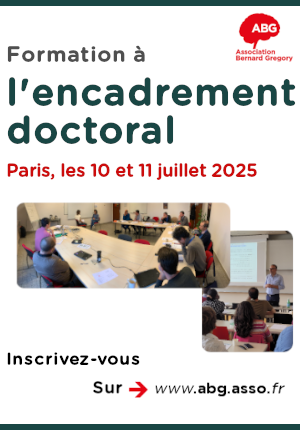Dialogue thyroïde-foie face à l'exposition aux contaminants : développement d'une nouvelle méthodologie d'approche (NAM) basée sur une approche de coculture microfluidique // Unravelling the thyroid-liver dialog in face of contaminant exposure: developmen
|
ABG-130811
ADUM-63260 |
Sujet de Thèse | |
| 11/04/2025 | Contrat doctoral |
Université de Toulouse
Toulouse cedex 3 - France
Dialogue thyroïde-foie face à l'exposition aux contaminants : développement d'une nouvelle méthodologie d'approche (NAM) basée sur une approche de coculture microfluidique // Unravelling the thyroid-liver dialog in face of contaminant exposure: developmen
- Ecologie, environnement
toxicologie, perturbateur thyroïdien, contaminants, culture cellulaire
Toxicology, thyroid disruptor, contaminants, cell culture
Toxicology, thyroid disruptor, contaminants, cell culture
Description du sujet
Des perturbations du système thyroïdien pendant la grossesse peuvent être associées à des troubles cognitifs et comportementaux. Ces perturbations mettent en jeu différentes voies de signalisations intriquées les unes aux autres. Les perturbations du catabolisme hépatique des hormones thyroïdiennes (HT) et de leur biosynthèse sont deux des mécanismes les plus fréquemment incriminés dans l'effet de contaminants chimiques sur la fonction thyroïdienne. Face à une exposition à de multiples contaminants tels que celles auxquelles les organismes vivants sont soumis du fait des activités anthropiques, il est probable que ces deux mécanismes d'action puissent coexister. En outre le foie et la thyroïde sont engagés dans des interactions fonctionnelles déterminantes. Le foie est en effet le principal organe de métabolisation des hormones thyroïdiennes alors même que celle-ci peuvent moduler de façon importante les fonctions métaboliques hépatiques.
La pleine reconnaissance de la dangerosité des substances perturbant le système endocrinien dont le système thyroïdien dans les principaux règlements de l'UE régissant les produits chimiques met en évidence le besoin urgent d'améliorer le cadre conceptuel de l'évaluation des risques liés aux PE. Du fait de la pression sociétale pour une réduction de l'expérimentation animale, le développement de nouvelles approches méthodologiques (NAM) notamment in vitro pour prouver l'activité endocrinienne se profile comme un domaine essentiel pour l'évaluation réglementaire. Bien que l'homéostasie thyroïdienne soit critique pour le développement, très peu d'approches sont disponibles et elles s'adressent le plus souvent à un unique mécanisme.
Dans ce contexte, nous proposons de développer un modèle microfluidique thyroïde-foie in vitro (utilisant des cellules souches pluripotentes induites redifférenciées en thyréocytes combinées à la lignée cellulaire HepaRG) pour le criblage des PE qui ciblent le métabolisme hépatique des hormones thyroïdiennes (HT) en conjonction avec une altération de leurs voies de biosynthèse. Dans le cadre d'une recherche collaborative (Projet Thyrex) avec une équipe d'épidémiologistes de l'INSERM, le modèle développé sera utilisé pour élucider les mécanismes d'action sur l'axe foie-thyroïde d'un mélange de contaminants retrouvés chez des femmes enceintes dans des cohortes européennes dans un schéma d'exposition pertinent (composition, concentrations...) visant à reproduire l'exposition interne des femmes enceintes.
------------------------------------------------------------------------------------------------------------------------------------------------------------------------
------------------------------------------------------------------------------------------------------------------------------------------------------------------------
Disturbances of the thyroid system during pregnancy may be associated with cognitive and behavioral disorders. These disturbances involve a number of interconnected signalling pathways. Disturbances in thyroid hormone (TH) biosynthesis and hepatic catabolism and are two of the most frequently incriminated mechanisms for the effect of endocrine disrupting chemicals (EDCs) on the thyroid function. Faced with exposure to multiple contaminants such as those to which living organisms are subjected as a result of anthropogenic activities, it is likely that these two mechanisms of action may coexist. In addition, the liver and thyroid are involved in decisive functional interactions. The liver is indeed the main metabolizer of TH, which can in turn significantly modulate hepatic metabolic functions and capacities.
The full recognition of the hazardous nature of EDCs, including those targeting the thyroid system, in the main EU regulations governing chemicals highlights the urgent need to improve the conceptual framework for risk assessment of EPs. Due to societal pressure to reduce animal testing, the development of new methodological approaches (NAMs), particularly in vitro, to prove endocrine activity is emerging as an essential area for EP risk assessment.Although thyroid homeostasis is critical for development, very few approaches are available, and they most often address a single mechanism.
In this context, we propose to develop an in vitro thyroid-liver microfluidic model (using first FRTL5 rat thyreocytes and then human induced pluripotent stem cells redifferentiated into thyreocytes combined with the human HepaRG hepatic cell line) for screening PEs that target hepatic thyroid hormone (HT) metabolism in conjunction with alteration of their biosynthesis pathways. As part of a collaborative research project (Projet Thyrex) with a team of epidemiologists from INSERM, the model developed will be used to elucidate the mechanisms of action on the liver-thyroid axis of a mixture of contaminants found in pregnant women in European cohorts in a relevant exposure scheme (composition, concentrations...) aimed at reproducing the internal exposure of pregnant women.
------------------------------------------------------------------------------------------------------------------------------------------------------------------------
------------------------------------------------------------------------------------------------------------------------------------------------------------------------
Début de la thèse : 01/10/2025
La pleine reconnaissance de la dangerosité des substances perturbant le système endocrinien dont le système thyroïdien dans les principaux règlements de l'UE régissant les produits chimiques met en évidence le besoin urgent d'améliorer le cadre conceptuel de l'évaluation des risques liés aux PE. Du fait de la pression sociétale pour une réduction de l'expérimentation animale, le développement de nouvelles approches méthodologiques (NAM) notamment in vitro pour prouver l'activité endocrinienne se profile comme un domaine essentiel pour l'évaluation réglementaire. Bien que l'homéostasie thyroïdienne soit critique pour le développement, très peu d'approches sont disponibles et elles s'adressent le plus souvent à un unique mécanisme.
Dans ce contexte, nous proposons de développer un modèle microfluidique thyroïde-foie in vitro (utilisant des cellules souches pluripotentes induites redifférenciées en thyréocytes combinées à la lignée cellulaire HepaRG) pour le criblage des PE qui ciblent le métabolisme hépatique des hormones thyroïdiennes (HT) en conjonction avec une altération de leurs voies de biosynthèse. Dans le cadre d'une recherche collaborative (Projet Thyrex) avec une équipe d'épidémiologistes de l'INSERM, le modèle développé sera utilisé pour élucider les mécanismes d'action sur l'axe foie-thyroïde d'un mélange de contaminants retrouvés chez des femmes enceintes dans des cohortes européennes dans un schéma d'exposition pertinent (composition, concentrations...) visant à reproduire l'exposition interne des femmes enceintes.
------------------------------------------------------------------------------------------------------------------------------------------------------------------------
------------------------------------------------------------------------------------------------------------------------------------------------------------------------
Disturbances of the thyroid system during pregnancy may be associated with cognitive and behavioral disorders. These disturbances involve a number of interconnected signalling pathways. Disturbances in thyroid hormone (TH) biosynthesis and hepatic catabolism and are two of the most frequently incriminated mechanisms for the effect of endocrine disrupting chemicals (EDCs) on the thyroid function. Faced with exposure to multiple contaminants such as those to which living organisms are subjected as a result of anthropogenic activities, it is likely that these two mechanisms of action may coexist. In addition, the liver and thyroid are involved in decisive functional interactions. The liver is indeed the main metabolizer of TH, which can in turn significantly modulate hepatic metabolic functions and capacities.
The full recognition of the hazardous nature of EDCs, including those targeting the thyroid system, in the main EU regulations governing chemicals highlights the urgent need to improve the conceptual framework for risk assessment of EPs. Due to societal pressure to reduce animal testing, the development of new methodological approaches (NAMs), particularly in vitro, to prove endocrine activity is emerging as an essential area for EP risk assessment.Although thyroid homeostasis is critical for development, very few approaches are available, and they most often address a single mechanism.
In this context, we propose to develop an in vitro thyroid-liver microfluidic model (using first FRTL5 rat thyreocytes and then human induced pluripotent stem cells redifferentiated into thyreocytes combined with the human HepaRG hepatic cell line) for screening PEs that target hepatic thyroid hormone (HT) metabolism in conjunction with alteration of their biosynthesis pathways. As part of a collaborative research project (Projet Thyrex) with a team of epidemiologists from INSERM, the model developed will be used to elucidate the mechanisms of action on the liver-thyroid axis of a mixture of contaminants found in pregnant women in European cohorts in a relevant exposure scheme (composition, concentrations...) aimed at reproducing the internal exposure of pregnant women.
------------------------------------------------------------------------------------------------------------------------------------------------------------------------
------------------------------------------------------------------------------------------------------------------------------------------------------------------------
Début de la thèse : 01/10/2025
Nature du financement
Contrat doctoral
Précisions sur le financement
Concours pour un contrat doctoral
Présentation établissement et labo d'accueil
Université de Toulouse
Etablissement délivrant le doctorat
Université de Toulouse
Ecole doctorale
458 SEVAB - Sciences Ecologiques, Vétérinaires, Agronomiques et Bioingenieries
Profil du candidat
-Qualification en biologie/physiologie cellulaire, biochimie, toxicologie
-Compétence en cultures cellulaires
-Connaissances de base en pharmacocinétique
-Motivation pour le travail en équipe et la démarche de recherche
-Connaissance en Informatique/Bureautique Excel -Word -Powerpoint- Zotero – GraphPad
-Qualification in animal and cellular biology/physiology, biochemistry, toxicology -Cell culture skills -Basic knowledge of pharmacokinetics -Motivation for teamwork and the research process -Computer/office skills Excel -word - Powerpoint- Zotero - GraphPad
-Qualification in animal and cellular biology/physiology, biochemistry, toxicology -Cell culture skills -Basic knowledge of pharmacokinetics -Motivation for teamwork and the research process -Computer/office skills Excel -word - Powerpoint- Zotero - GraphPad
03/06/2025
Postuler
Fermer
Vous avez déjà un compte ?
Nouvel utilisateur ?
Besoin d'informations sur l'ABG ?
Vous souhaitez recevoir nos infolettres ?
Découvrez nos adhérents
 MabDesign
MabDesign  Ifremer
Ifremer  Généthon
Généthon  ASNR - Autorité de sûreté nucléaire et de radioprotection - Siège
ASNR - Autorité de sûreté nucléaire et de radioprotection - Siège  Laboratoire National de Métrologie et d'Essais - LNE
Laboratoire National de Métrologie et d'Essais - LNE 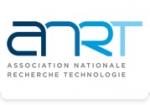 ANRT
ANRT  Aérocentre, Pôle d'excellence régional
Aérocentre, Pôle d'excellence régional 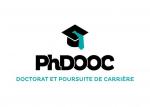 PhDOOC
PhDOOC  MabDesign
MabDesign  SUEZ
SUEZ 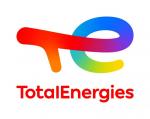 TotalEnergies
TotalEnergies  CASDEN
CASDEN  ONERA - The French Aerospace Lab
ONERA - The French Aerospace Lab  CESI
CESI  Groupe AFNOR - Association française de normalisation
Groupe AFNOR - Association française de normalisation  Nokia Bell Labs France
Nokia Bell Labs France  Institut Sup'biotech de Paris
Institut Sup'biotech de Paris  ADEME
ADEME  Tecknowmetrix
Tecknowmetrix

